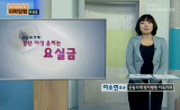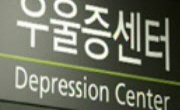This study aimed to investigate factors affecting frailty by urinary incontinence groups among the vulnerable elderly woman in Korea. In this secondary analysis, data were collected from records for 3,251 elders registered in the Visiting Health Manag...
http://chineseinput.net/에서 pinyin(병음)방식으로 중국어를 변환할 수 있습니다.
변환된 중국어를 복사하여 사용하시면 됩니다.
- 中文 을 입력하시려면 zhongwen을 입력하시고 space를누르시면됩니다.
- 北京 을 입력하시려면 beijing을 입력하시고 space를 누르시면 됩니다.

지역사회 거주 여성노인의 요실금 유무에 따른 허약정도와 허약 영향요인 = Frailty and its Related Factors in the Vulnerable Elderly Woman by Urinary Incontinence
한글로보기https://www.riss.kr/link?id=A104805598
-
저자
박진경 (인천가톨릭대학교)
- 발행기관
- 학술지명
- 권호사항
-
발행연도
2017
-
작성언어
Korean
-
주제어
허약 ; 요실금 ; 걷기운동 ; 우울 ; Frail Elderly ; Urinary incontinence ; Depression ; Walking exercise
-
등재정보
KCI등재
-
자료형태
학술저널
- 발행기관 URL
-
수록면
893-907(15쪽)
-
KCI 피인용횟수
3
- 제공처
- 소장기관
-
0
상세조회 -
0
다운로드
부가정보
다국어 초록 (Multilingual Abstract)
This study aimed to investigate factors affecting frailty by urinary incontinence groups among the vulnerable elderly woman in Korea. In this secondary analysis, data were collected from records for 3,251 elders registered in the Visiting Health Management program of Public Health Centers in 2012. body mass index, waist circumference, timed up & go, depression, self rated helath, walking exercise, flexibility exercise, strengh exercise and frailty were assessed. Data were analyzed using x2-test, t-test, ANOVA, Pearson’s correlation and stepwise regression to determine the associated factors of frailty by urinary incontinence. Depression, walking exercise, timed up & go and age were found to be factors significantly associated with frailty among the elders with incontinence(F=38.321, p<.001). Age, depression, walking exercise, self rated health and tined up & go were found to be factors associated with frailty in the elders without incontinence(F=265.666 p<.001). The findings show that frailty of elders and associated factors were different by urinary incontinence, and common factors affecting frailty were depression, walking exercise, timed up & go, age. Thus, these factors should be considered in the development of intervention program for care and prevention of frailty and program should be modified according to urinary incontinence.
국문 초록 (Abstract)
본 연구는 지역사회에 거주하는 여성 노인의 요실금 유무에 따른 허약정도와 허약에 영향을 미치는 요인을 파악하기 위하여, 2012년 S시 8개구의 보건소 방문건강관리사업 대상자 중 65세 이...
본 연구는 지역사회에 거주하는 여성 노인의 요실금 유무에 따른 허약정도와 허약에 영향을 미치는 요인을 파악하기 위하여, 2012년 S시 8개구의 보건소 방문건강관리사업 대상자 중 65세 이상 여성노인 3,251명의 자료를 이차 분석하였다. 요실금 유무별 여성노인의 체질량 지수, 허리둘레, 복합적 이동능력, 우울, 주관적 건강과 걷기운동, 유연성 운동 및 근력운동에 따른 허약의 차이를 파악하기 위하여 x2-test, t-test, ANOVA를 실시하였으며, 사후검증은 Scheffe test를 실시하였다. 또한, 요실금 유무에 따른 제 변수별 상관관계는 Pearson’s correlation을 실시하였고, 요실금 유무에 따른 허약에 가장 영향을 미치는 요인을 파악하고자 위계적 회귀분석을 수행하여 비교하였다. 연구결과, 요실금이 있는 여성노인의 허약에 가장 영향을 미치는 요인은 우울, 걷기 운동, 복합적 이동능력, 연령순으로 높게 나타났으며(F=38.321, p<.001), 이들 변수에 의해 허약이 36.6% 설명되었다. 요실금이 없는 집단에서 유의한 변인은 연령, 우울, 걷기 운동, 주관적 건강, 복합적 이동능력 순으로 높게 나타났으며(F=265.666, p<.001), 이들 변수에 의해 허약 정도가 설명되는 변량은 30.7%였다. 향후 지역사회에 거주하는 여성 노인, 특히 요실금을 갖고 있는 여성노인의 허약을 예방하기 위하여, 하루 10분 이상, 주 5일 이상의 규칙적인 걷기 운동 프로그램과 우울을 예방하고 관리하는 프로그램을 제언한다.
참고문헌 (Reference)
1 정복자, "허약노인을 위한 운동재활" 15 (15): 9-13, 2014
2 김창오, "허약노인을 위한 방문재활 프로그램의 장애발생예방 효과에 대한 연구" 한국노년학회 30 (30): 1293-1309, 2010
3 선우덕, "허약노인 대상의보건의료서비스 개발 및 효율적 운영체계 구축방안" 한국보건사회연구원 2004
4 기백석, "한국판 노인 우울 척도 단축형의 표준화 예비연구" 35 (35): 298-307, 1996
5 "통계청"
6 박진경, "취약계층 노인의 허약 영향 요인" 한국노년학회 34 (34): 441-456, 2014
7 박은옥, "취약계층 노인의 연령별 허약정도와 관련 요인" 한국간호과학회 46 (46): 848-857, 2016
8 김효영, "지역사회 허약노인과 비허약노인의 신체기능, 건강관련 삶의 질 및 자아통합감" 계명대학교 대학원 2009
9 김광숙, "일 지역 중년여성의 요실금 실태 및 교육 요구도 조사" 한국모자보건학회 19 (19): 1-10, 2015
10 김건희, "일 도시 지역 노인여성의 요실금, 우울 및 삶의 질의 관계" 한국노년학회 27 (27): 943-962, 2007
1 정복자, "허약노인을 위한 운동재활" 15 (15): 9-13, 2014
2 김창오, "허약노인을 위한 방문재활 프로그램의 장애발생예방 효과에 대한 연구" 한국노년학회 30 (30): 1293-1309, 2010
3 선우덕, "허약노인 대상의보건의료서비스 개발 및 효율적 운영체계 구축방안" 한국보건사회연구원 2004
4 기백석, "한국판 노인 우울 척도 단축형의 표준화 예비연구" 35 (35): 298-307, 1996
5 "통계청"
6 박진경, "취약계층 노인의 허약 영향 요인" 한국노년학회 34 (34): 441-456, 2014
7 박은옥, "취약계층 노인의 연령별 허약정도와 관련 요인" 한국간호과학회 46 (46): 848-857, 2016
8 김효영, "지역사회 허약노인과 비허약노인의 신체기능, 건강관련 삶의 질 및 자아통합감" 계명대학교 대학원 2009
9 김광숙, "일 지역 중년여성의 요실금 실태 및 교육 요구도 조사" 한국모자보건학회 19 (19): 1-10, 2015
10 김건희, "일 도시 지역 노인여성의 요실금, 우울 및 삶의 질의 관계" 한국노년학회 27 (27): 943-962, 2007
11 오영희, "우리나라 노인의 주관적 건강인식과 신체적 및 정신적 기능상태의 관련성 연구" 한국노년학회 26 (26): 461-476, 2006
12 최경원, "빈곤 여성노인의 연령군별 요실금 중증도 및 관련요인" 한국노년학회 33 (33): 335-347, 2013
13 이인숙, "맞춤형 방문건강관리사업 등록 취약 노인의 허약수준과 건강관련 특성" 대한노인병학회 16 (16): 74-83, 2012
14 염지혜, "도시노인과 농촌노인의 주관적 건강상태 궤적에 대한 비교 연구 : 잠재성장모형을 이용하여" 한국농촌사회학회 23 (23): 193-239, 2013
15 김춘미, "농촌 지역 중년기 이후 여성들의 요실금 관련 건강문제와 대처" 한국지역사회간호학회 24 (24): 368-376, 2013
16 최경원, "노인허약에 대한 고찰" 한국재활간호학회 11 (11): 67-73, 2008
17 김영근, "노인의 건강에 대한 인식과 삶의 질에 관한 연구 - 대구광역시 중심으로-" 대한작업치료학회 16 (16): 99-110, 2008
18 보건복지부, "노인실태조사" 보건복지부 2011
19 송미순, "노인간호학" 서울대출판부 1995
20 박명화, "노인간호학" 정담미디어 2013
21 노국희, "노인 걷기운동이 하지근지구력, 전신지구력과 상체유연성에 미치는 효과: 메타분석" 한국간호과학회 43 (43): 536-546, 2013
22 김선호, "노르딕 걷기운동이 노인 여성의 골밀도 및 골 관련 지표에 미치는 영향" 한국체육학회 52 (52): 571-584, 2013
23 김고은, "노년기 요실금의유병률과 관련요인에 관한 연구" 17 (17): 1225-1356, 1997
24 이해현, "골반저근운동프로그램이 긴장성 요실금 여성노인의 하부요로증상과 최대질수축압, 골반저근 활성도에 미치는 효과" 국민체육진흥공단 부설 한국스포츠개발원 20 (20): 466-474, 2009
25 송미숙, "경로당 등록 노인의 주관적건강수준과 관련 요인" 23 (23): 127-142, 2003
26 국민건강보험공단, "건강보험통계" 국민건강보험공단 2013
27 Fried, L. P., "Untangling the concepts of disability, frailty, and comorbidity : implications for improved targeting and care" 59 : 255-263, 2004
28 Baron, R. M., "The moderate-mediator variable distinction in social psychological reseaech : Conceptual, strategic and statistical cosiderations" 51 : 1173-1182, 1986
29 Verbrugge, L. M., "The disablement process" 38 (38): 1-14, 1994
30 송지준, "SPSS/AMOS 통계분석방법" 21세기사 2013
31 Fried L. P., "Principles of Geiratirc Medicine and Georntology" McGraw Hill 1998
32 Rockwood K, "Prevalence, attributes, and outcomes of fitness and frailty in community-dwelling older adults : report from the Canadian study of health and aging" 59 (59): 1310-1317, 2004
33 FrancescoL., "Potentially reversible risk factors and urinary incontinence in frail older people living in community" 32 : 194-199, 2003
34 RockwoodK, "Long-term risks of death and institutionalization of elderly people in relation to deficit accumulation at age 70" 54 (54): 975-979, 2006
35 Boyd, C. M., "Frailty, hospitalization, and progression of disability in a cohort of disabled older women" 118 (118): 1225-1231, 2005
36 Fried, L. P., "Frailty in older adults: evidence for a phenotype" 56 : M146-M156, 2001
37 Kojima G., "Frailty as a predictor of disabilities among community-dwelling older people : a systematic review and meta-analysis" 39 (39): 1897-1909, 2017
38 McKenzie K, "Frailty as a Predictor of Institutionalization Among Adults With Intellectual and Developmental Disabilities" 54 (54): 123-135, 2017
39 Ensrud K. E., "Frailty and risk of falls, fracture, and mortality in older women : the study of osteoporotic fractures" 62 (62): 744-751, 2007
40 Yang F., "Frailty and life satisfaction in Shanghai older adults : The roles of age and social vulnerability" 67 : 68-73, 2016
41 Morley, J. E., "Frailty" 90 : 837-847, 2006
42 Abreu da Silva, V., "Factors associated with urinary incontinence in elderly individuals who meet frailty criteria" 21 (21): 338-347, 2012
43 DioknoA. C., "Epidemiology of urinary incontinence" 56A : M3-M4, 2001
44 Philip D. St. John, "Depressive symptoms and frailty" 28 : 607-614, 2013
45 Suzanne L, Tyas, "Depressive Symptoms and Frailty" 28 : 607-614, 2013
46 Mezuk B, "Depression and frailty in later life: a synthetic review" 10-, 2011
47 Strawbridge W. J., "Antecedents of frailty over three decades in an older cohort" 53B (53B): S9-S16, 1998
48 Krupa S, "A New Frailty Syndrome : Central Obesity and Frailty in Older Adults with the Human Immunodeficiency Virus" 60 : 545-549, 2012
49 보건복지부, "2012년 방문건강관리사업 안내. (2012)" 보건복지부 2012
동일학술지(권/호) 다른 논문
-
여성 노인의 거주형태에 따른 우울과 삶의 만족도에 대한 단기종단연구
- 한국노년학회
- 전병주
- 2017
- KCI등재
-
중․고령자의 건강 악화가 조기은퇴에 미치는 영향 연구-근로형태 별 비례위험모형 분석
- 한국노년학회
- 정종우
- 2017
- KCI등재
-
한국노인의 인지기능 향상 프로그램 효과성 메타분석: 인지기능장애집단과 일반집단 비교
- 한국노년학회
- 김일식
- 2017
- KCI등재
-
한국 노인의 저작능력이 인지기능에 미치는 영향: 신체기능과 우울의 매개효과
- 한국노년학회
- 서한나
- 2017
- KCI등재
분석정보
인용정보 인용지수 설명보기
학술지 이력
| 연월일 | 이력구분 | 이력상세 | 등재구분 |
|---|---|---|---|
| 2026 | 평가예정 | 재인증평가 신청대상 (재인증) | |
| 2020-01-01 | 평가 | 등재학술지 유지 (재인증) |  |
| 2017-01-01 | 평가 | 등재학술지 유지 (계속평가) |  |
| 2013-01-01 | 평가 | 등재학술지 유지 (등재유지) |  |
| 2010-01-01 | 평가 | 등재학술지 유지 (등재유지) |  |
| 2008-01-01 | 평가 | 등재학술지 유지 (등재유지) |  |
| 2006-01-01 | 평가 | 등재학술지 유지 (등재유지) |  |
| 2003-01-01 | 평가 | 등재학술지 선정 (등재후보2차) |  |
| 2002-01-01 | 평가 | 등재후보 1차 PASS (등재후보1차) |  |
| 2000-07-01 | 평가 | 등재후보학술지 선정 (신규평가) |  |
학술지 인용정보
| 기준연도 | WOS-KCI 통합IF(2년) | KCIF(2년) | KCIF(3년) |
|---|---|---|---|
| 2016 | 1.34 | 1.34 | 1.72 |
| KCIF(4년) | KCIF(5년) | 중심성지수(3년) | 즉시성지수 |
| 1.84 | 2.08 | 2.242 | 0.19 |




 DBpia
DBpia







